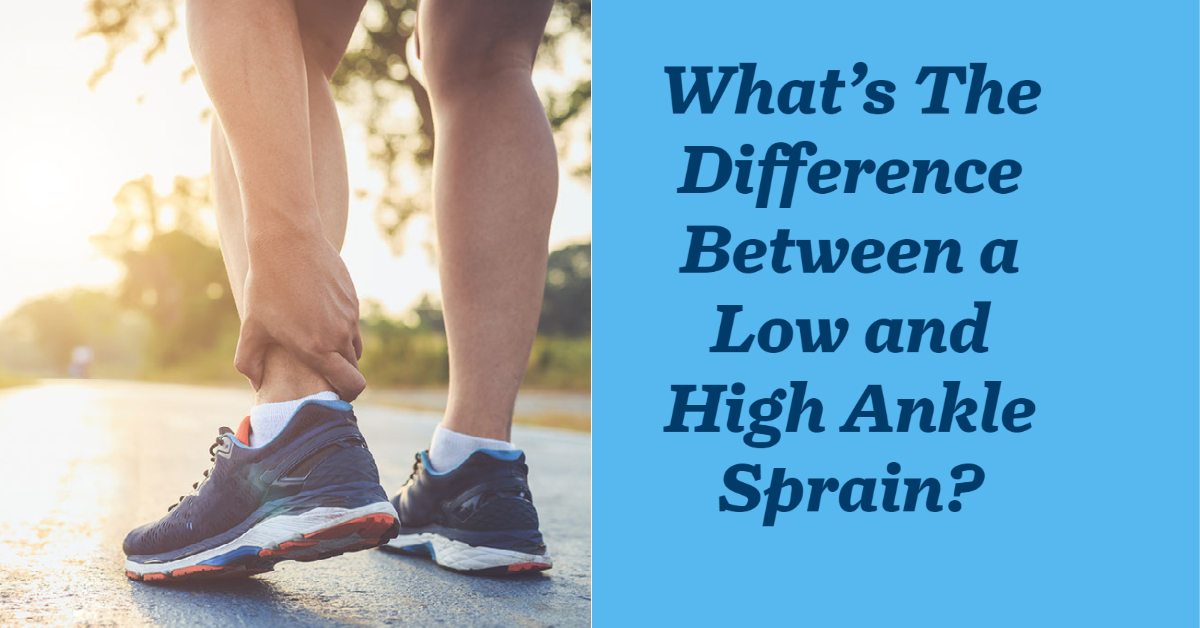
What’s The Difference Between a Low and High Ankle Sprain?
Did you know that your ankle is one of the most widely used joints in your body? You or someone that you know have probably suffered from an ankle sprain. That being said, not all ankle sprains are created equal. The injury could be a low ankle sprain or a high ankle sprain. In essence, ankle sprains happen when you twist, turn, or roll your ankle in a manner that either stretches or tears the ligaments that actually hold your ankle joint together.
Low ankle sprains are far more common than high ankle sprains. A low ankle sprain affects the ligaments that support the joint located directly below the ankle joint, which is referred to as the subtalar joint. The subtalar joint provides your foot with the ability to rotate inside and outside, or to the left and right. The vast majority of low ankle sprains happen to the outside, or lateral of the ankle joint. You will experience swelling, bruising and pain along with joint instability when suffering from a low ankle sprain. On the other hand, or foot in this case, high ankle sprains are far less common, but a lot more serious when compared to low ankle sprains.
High ankle sprains occur in the upper ligaments that are around your ankle and connect to the outside leg bone, known as the fibula, to the shin bone, which is known as the tibia. Although high ankle sprains can happen to anyone, they typically happen far more frequently to athletes who participate in high impact sports. The button line is that planting and rotating the foot to the outer side of the leg tends to cause this type of injury. In addition, a high ankle sprain can end up resulting in a broken or fractured fibula.
If that occurs, the patient can’t bear any weight on their injured ankle. There are some obvious symptoms of a high ankle sprain. For example, if you have bruising and swelling across the high part of your ankle, you may be suffering from a high ankle sprain. If that pain above your ankle increases as you rotate your foot in an outward motion, it’s another sign of a high ankle sprain. If you can’t perform a single leg calf raise and have pain when walking, you may very well have a high ankle sprain. Some high ankle sprains require surgery and physical therapy, while other cases only require physical therapy.
If you would like more information about our physical therapy programs for low ankle sprains and high ankle sprains, please contact our office today to set up an appointment on a day and time that’s convenient for you.
There are many things that make Quiet Corner Physical Therapy different. First and foremost, our dedicated staff is completely devoted to making your physical therapy experience as easy and enjoyable as possible. We pride ourselves on providing each and every one of our patients with industry leading individualized care and treatment plans. The number one concern of our compassionate staff is your well being. Quiet Corner has the unique ability to utilize the most effective treatment techniques and services including cupping, paraffin, dry needling, mobility tools, E-stim, TENS, taping, traction, and joint/soft tissue mobilization just to name a few.
Our entire team truly cares about educating our patients because we know how much of an important role it plays in your overall healing process. We’re also proud of the fact that we use the latest technology to show you exactly where the problem is occurring. It also goes a long way in helping us to improve your current situation.


